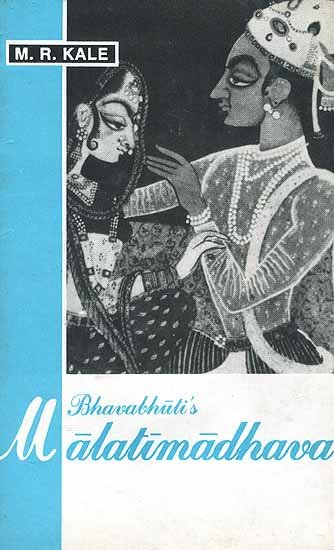Malatimadhava (study)
by Jintu Moni Dutta | 2017 | 52,468 words | ISBN-10: 8120813057 | ISBN-13: 9788120813052
This page relates ‘Shabdalamkara (Figure of Word)’ from the English study on the Malatimadhava of Bhavabhuti:—A Prakarana type of Drama in ten acts revolving around the love-story of Malati (from Padmāvatī) and Madhava (from Vidarbha). This study discusses the history of its author and the literary, social, religious, historical and cultural aspects of the Malatimadhava.
Part 2.3a - Śabdālaṃkāra (Figure of Word)
Śabdālaṃkāras produce a special effect on the connoisseurs in the śravyakāvya as well as dṛśyakāvya. All the śabdālaṃkāras available in the Mālatīmādhava have been discussed in the following:
1. Anuprāsa (Alliteration):
The figure Anuprāsa or Alliteration consists in the sameness of the words, even though the vowels may be different.[1]
This alaṃkāra is mainly of five types [2] viz.,
Of these Ccekānuprāsa is the single repetition of several consonants once in the same or in more than one way.[3] Vṛtyanuprāsa is a single or manifold repetition of more than one consonant in a reverse order [4] , Śrutyanuprāsa is the insertion of only those letters which are pronounced from the same position or organ such as palate, tooth etc [5] , Antyānuprāsa is that in which a consonant is repeated together with the preceding vowel at the end[6] and Lāṭānuprāsa is that in which the word together with its meaning undergoes repetition of the difference occurring after the realization of the complete sentence.[7] In the Mālatīmādhava, Bhavabhūti has used aptly this alaṃkāra. As for instance in the verse asāram saṃsāram parimuṣitaratnam ………….etc [8] manifold repetition of more than one consonant in a reverse order is found. So here, the Anuprāsa is called vṛtyanuprāsa alaṃkāra. Other examples of Anuprāsa alaṃkāra are——Act V- 11, 24, 30 etc.
2. Yamaka (Chime)
The figure Yamaka or Chime Pun is the repetition of letters in the same order with different meaning.[9] In Yamaka alaṃkāra the similarity of sounds are found.The application of Yamaka alaṃkāra is found in the verse jīva jīvitasamāya jīvitam ……….etc[10] wherein the word jiva is repeated and represents different meaning in spite of the similarity of sounds. Hence, the verse is a suitable example of the figure Yamaka.
3. Śleṣa (Pun):
When a word expresses more than one meaning it is called Śleṣa or pun.[11] In the Mālatīmādhava, Bhavabhūti has employed this figure rarely. In the verse ujjvalālokayā snigdhā tvayā …..etc[12] the words viz., ujjvalālokayā, snigdhā and malimasamukhi express more than one meaning. Hence in this verse an effective use of śleṣa alaṃkāra is found.
Footnotes and references:
[1]:
anuprāsaḥ śabdasāmyam vaiṣamye’opi svarasya yat //
Sāhityadarpaṇa,X. 2
[3]:
cheko vyañjanasaṅghasya sakṛtsāmyamanekadhā /
Ibid,X.2
[4]:
anekasyaikadhā sāmyamasakṛdvāṣyanekadhā /
ekasya sakṛdapyeṣa vṛttyanuprāsa ucyate //
Ibid.,X.4
[5]:
uccāryatvādyadekatra sthāne tālurādike /
sādṛśyaṃ vyaṅjanasyaiva śrutyanuprāsa uccyate //
Ibid., X.5
[6]:
vyaṅjanam cedyathāvasthaṃ sahādyena svareṇa tu /
āvartyate’ntyayojyatvādantyānuprāsa eva tat //
Ibid.,X.6
[7]:
śabdārthayoḥ paunaruktyaṃ bhede tātparyamātrataḥ lāṭānuprāsa ityukto /
Ibid., X.7
[8]:
[9]:
satyarthe pṛthagarthāyāḥ svaravyañjanasaṃhateḥ /
krameṇa tenaivāvṛttiryamakaṃ vinigadyate //
Sāhityadarpaṇa, X.8
[10]:
jīva jīvitasamāya jīvitaṃ dehi jīvatu suhṛjjanaśca /
aṅgakaistuhinasaṅgaśītalaiḥputrid māṃ priyasakhīṃ ca jīvaya //
Mālatīmādhava,X.18
[11]:
śliṣṭaiḥ padairanekārthābhidhāne śleṣa iṣyate /
Sāhityadarpaṇa,X.11
